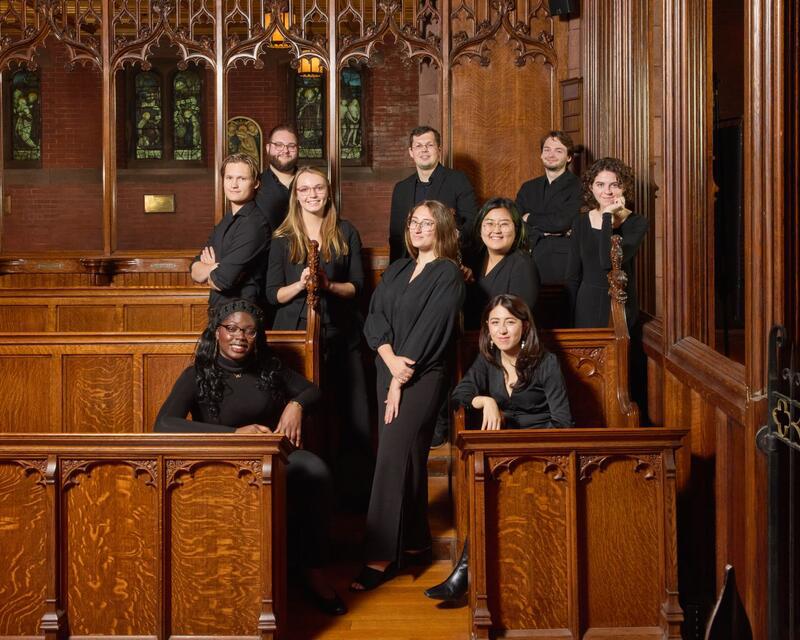Yale Voxtet performance celebrates medieval vocal music
Eight graduate students studying voice at the Yale Institute of Sacred Music held a performance this weekend of Latin Vespers, showcasing the complexity and artistry of historically religious music.

Courtesy of Robert Lisak
Latin may be known as a “dead” language, but its influence on music is undeniable, surviving as a language for traditional religious music dating back to the early Middle Ages.
On Jan. 25 at 5:30 p.m. in Dwight Hall, eight graduate students studying vocal performance under the guidance of professor James Taylor at the Yale Institute of Sacred Music showcased their work with spoken Latin and historical religious music. They performed Latin Vespers for the feast of the Purification, or Candlemas, in plainchant, with five 13th-century polyphonic works from “Las Huelgas Codex.”
The students, who all auditioned to be a part of the Yale Voxtet, specialize in early music, oratorio and chamber ensembles. This performance is a fulfillment of a course titled “Lyric Diction for Singers: LATIN,” offered to all graduate students in voice and conducting.
Taylor, a professor of voice, teaches the course in tandem with Susan Hellaue, a chant expert and co-founder of the trailblazing vocal ensemble, Anonymous 4. Their work is focused on teaching students the three main models of Latin pronunciation in French, German and Italian repertoire.
“The interesting thing about Latin is that essentially every country that was settled by Rome had their own pronunciation of Latin,” Taylor said.
The result: performers have to make well-calculated decisions about which pronunciation best suits the music of famous composers such as Bach, Charpentier or Vivaldi. For the concert this Saturday, Taylor arranged for audience members to be able to enjoy all three pronunciations in different parts of the program.
“This would never have happened in a normal vespers service, but for our purposes, it has proven to be highly informative,” he said. “If you listen closely, you might notice a distinctly Italian flavor in the Antiphons and Psalms, something German in the Magnificat and Hymn and a bit of France in the polyphonic selections.”
The program included Vespers, a service traditionally performed the eve before a religious holiday in medieval Europe along with a number of Gregorian chants, polyphonic works and spoken psalms. Gregorian chants are traditional monastic hymns dating back to the early middle ages, and polyphonic is a musical term describing multiple voices or lines.
Susan Hellaue, the chant scholar for the Yale Voxtet, explained that this event was held in commemoration of Candlemas, a holiday dating all the way back to fourth-century Christian feasts. In particular, it marked the halfway point between the winter solstice and the vernal equinox that predicts the return of light.
Nowadays, however, Hellaue said that “we assign this job of prediction to a portly rodent on February 2, rather than to a feast of the church. But the choice of day — whether descended from the Purification themes of light and renewal, or from Neolithic astrologers, or perhaps both — is no coincidence.”
Taylor described listening to this type of music as potentially “meditative and very peaceful,” emphasizing the universality of chant music as a thought-provoking experience for many.
Molly McGuire MUS ’23, a student of James Taylor and an alto for the Yale Voxtet, described Taylor as “well-versed in a plethora of different subjects.” His teaching, McGuire said, showcases how “sometimes there is a more holistic, art history approach when it comes to singing the music that we do.”
“The highlight for us is speaking in Latin in a rhetorical manner,” McGuire said. “It’s a really cool exercise to step into the shoes of ninth-century monks and perform it as they would without the standards of classical music today.”
This event will not be held as a religious service but as a chant concert. Admission is free for all.







